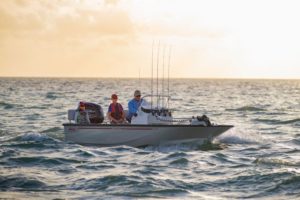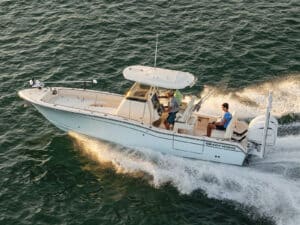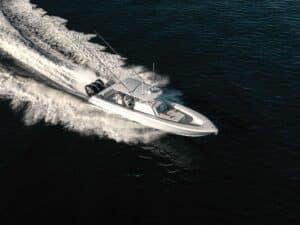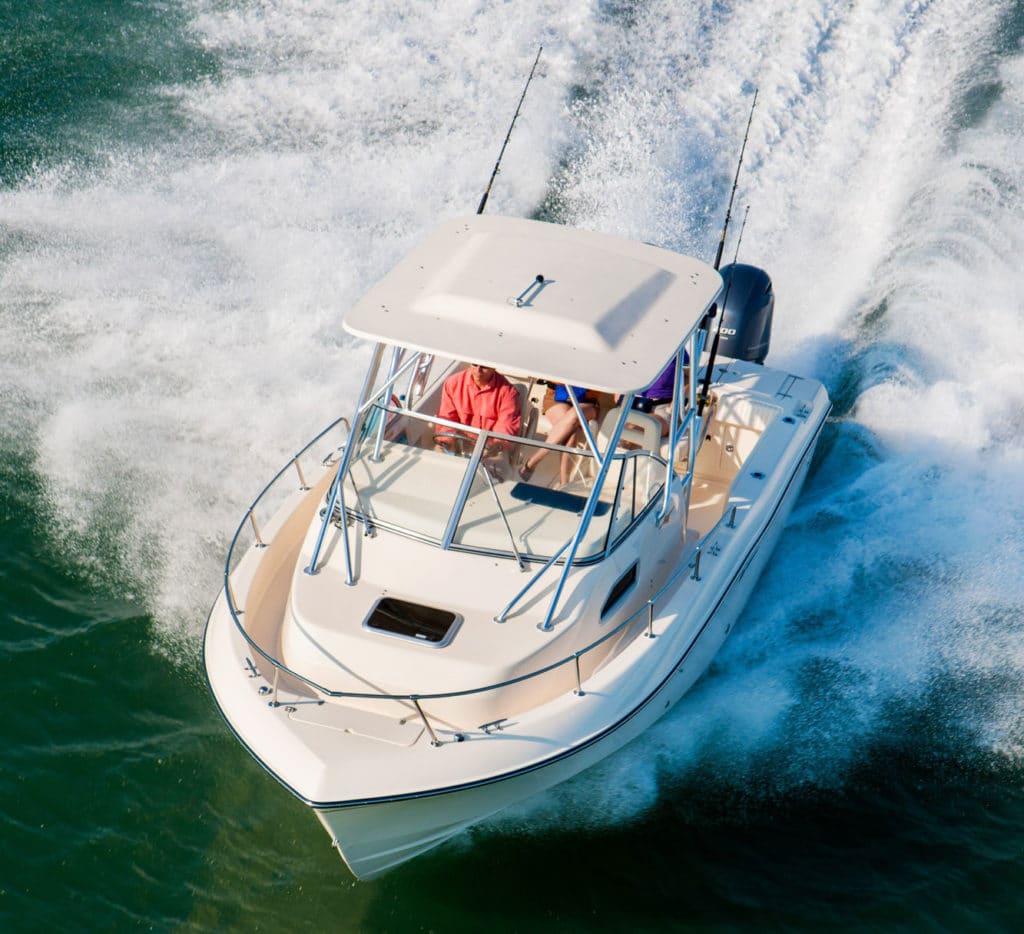
Walkaround boats are utility vehicles, combining deep-V hulls and high freeboard to handle rough waters offshore, varying levels of interior cabin space for protection from the elements and for overnight trips, and all-around access for crew to cast, follow fish, and handle lines. The helm-forward design allows for a spacious fishing cockpit, and interior amenities can vary from bare bones to fully appointed. You can find walkarounds from about 20 feet in length to the 30s.
Big Picture
A walkaround fishing boat is like a distant cousin to the offshore center-console. Fishing utility and crew mobility are emphasized in both—just in different ways. There are center-console boats with interior cabins and even spacious berths; however, center-consoles position the helms farther aft, improving performance with a favorable center of gravity and to increase bow casting and fishing space. Walkaround helms are generally farther forward, increasing the aft cockpit space.
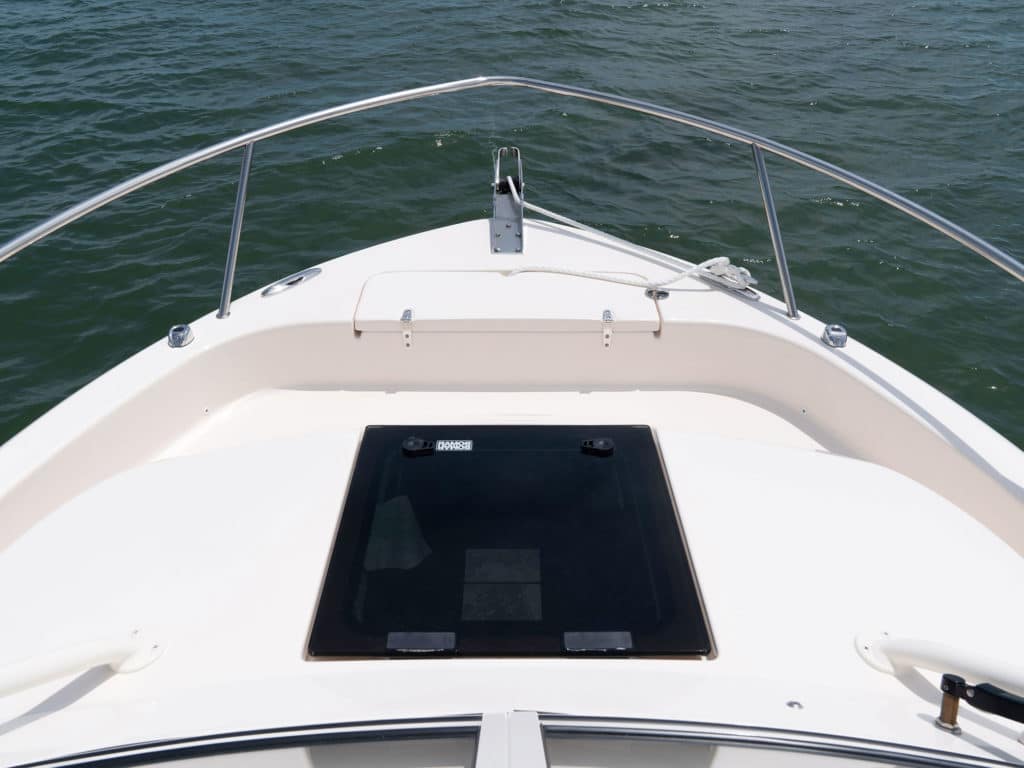
Mobility
The layout generally strikes a compromise between interior comfort and deck mobility, giving anglers enough room to scoot single file from back to front when it’s time to drop anchor or cast to boiling gamefish ahead of the boat. At some time you’ll need to move from the cockpit to the bow while fighting a fish in rough seas, so having railings and handholds within easy reach is an important confidence booster.
TIP: Rod in hand, test-walk any boat you’re considering to see how easy it is to follow a fish forward. Are there handholds or rails in easy reach in case the boat suddenly rolls?
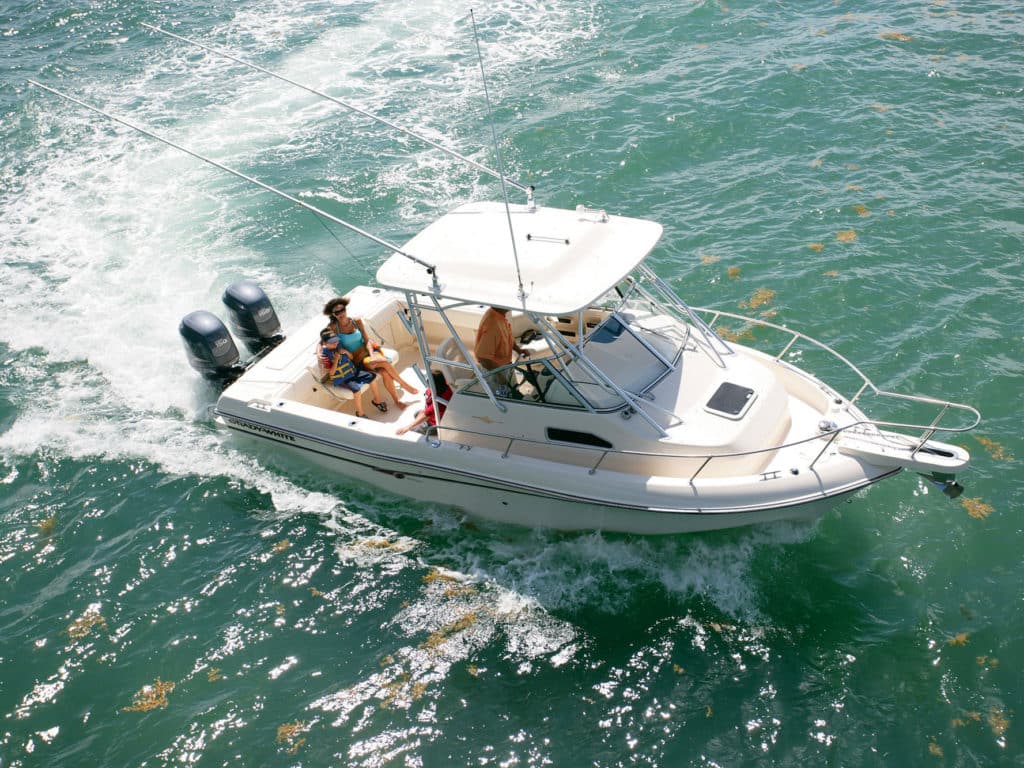
Rod Holders
Vertical gunwale rod holders are vital for trolling, drifting or kite-fishing, allowing anglers to deploy multiple baits and lures. Horizontal racks under the gunwale and vertical rocket launchers across the T-top allow anglers to travel with rigged rods for every type of fishing.
TIP: Make sure the rods you usually carry will fit into the undergunwale racks. The racks might not accommodate longer sticks.
Livewells
The best livewells are taller and narrower, with oval shapes or round corners that are kinder to live bait. Acrylic lids are best, and the livewell should fill to the closed lid to keep bait from sloshing and washing underway.
TIP: Test your plumbing to ensure optimal water flow. It should take seven minutes or less to fill a livewell from empty. This provides adequate water flow without harming the bait.
Horsepower
The choices of single versus twin engines are most common. Fewer motors providing comparable horsepower will likely be more fuel efficient due to reduced drag. Maintenance and repair costs will be substantially less, but you’ll lose the redundancy—a sacrifice most boaters make thanks to today’s reliable outboards.
TIP: Don’t skimp when it comes to power. A higher-horsepower outboard motor (or motors) will usually provide better acceleration, speed and fuel economy due to lower rpm at optimal cruising speed.
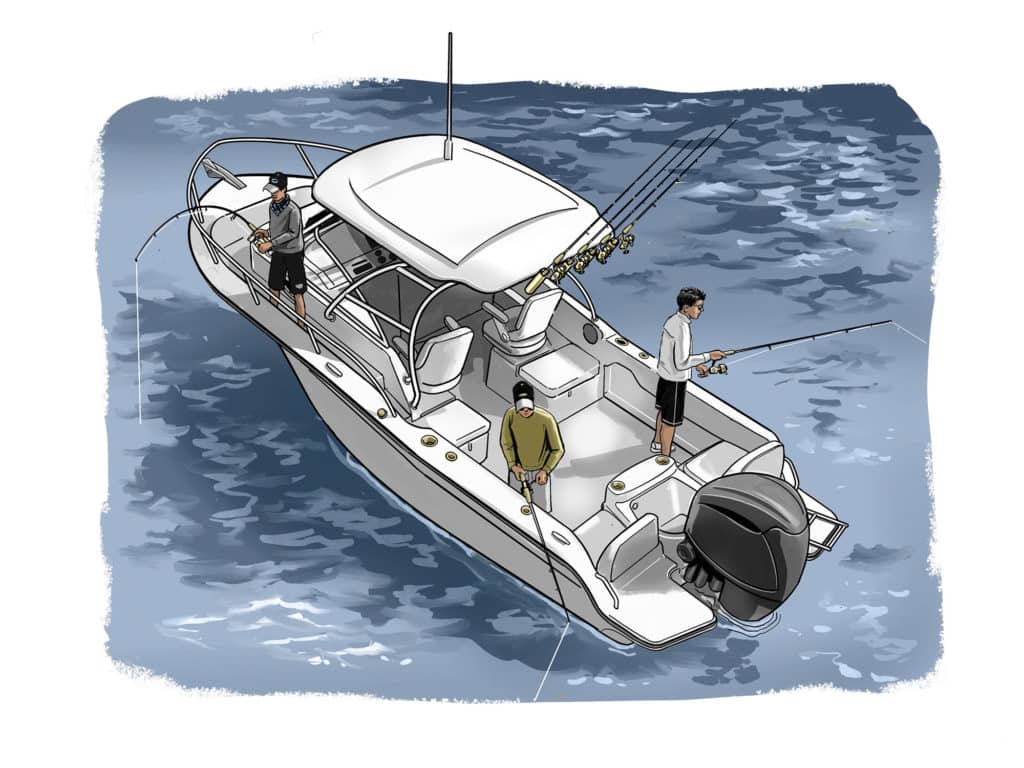
SUV of the Sea
Walkarounds are versatile vessels that provide anglers with plenty of real estate to fight fish while still offering space to duck out of the elements. While the berths tend to be on the cozy side, they are perfect for the occasional overnight at the canyon or with the family. Storage is another high point, with enough lockable enclosures to keep all your tackle and gear safely aboard.
Expert Says
“A true self-bailing cockpit, unsinkable foam flotation, and a seaworthy hull design come first. In addition, walkaround shoppers need to make sure the boat has a footbed that is wide and deep enough to move safely up to the bow and back,” says Shelley Tubaugh, vice president of marketing for Grady-White Boats. We spoke on the deck of the company’s new Adventure 218, a prototypical walkaround and proof that you can put a lot of space into a 21-foot boat. “Also, don’t forget to test how easily you can get in and out of the cabin, and make sure the cabin has adequate ventilation,” she added.
Editor Says: Even though the cabin provides some measure of comfort and protection from the elements, a canvas or fiberglass T-top is a great addition to a walkaround boat. It’s always nice to have some shade or protection from rain while you’re out on deck. The structure also provides additional places to grab onto when moving around the boat, space to mount electronics and antennas, and extra vertical rod storage. -Ron Ballanti, Freelance Writer, Fishing Group

